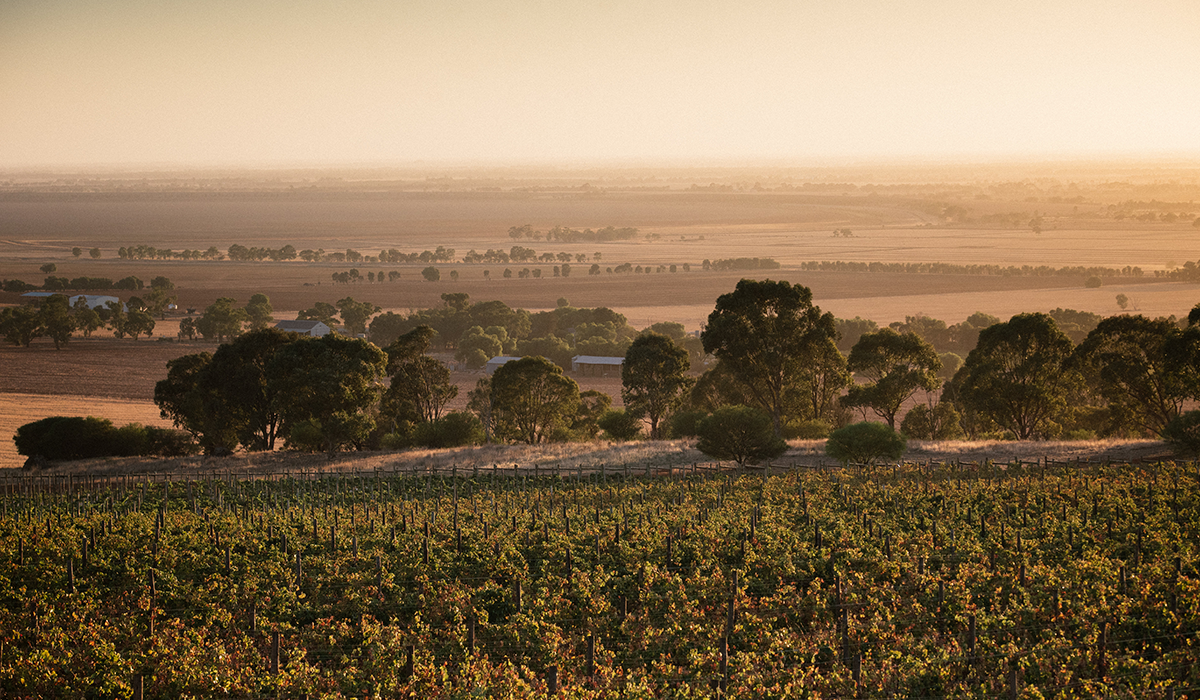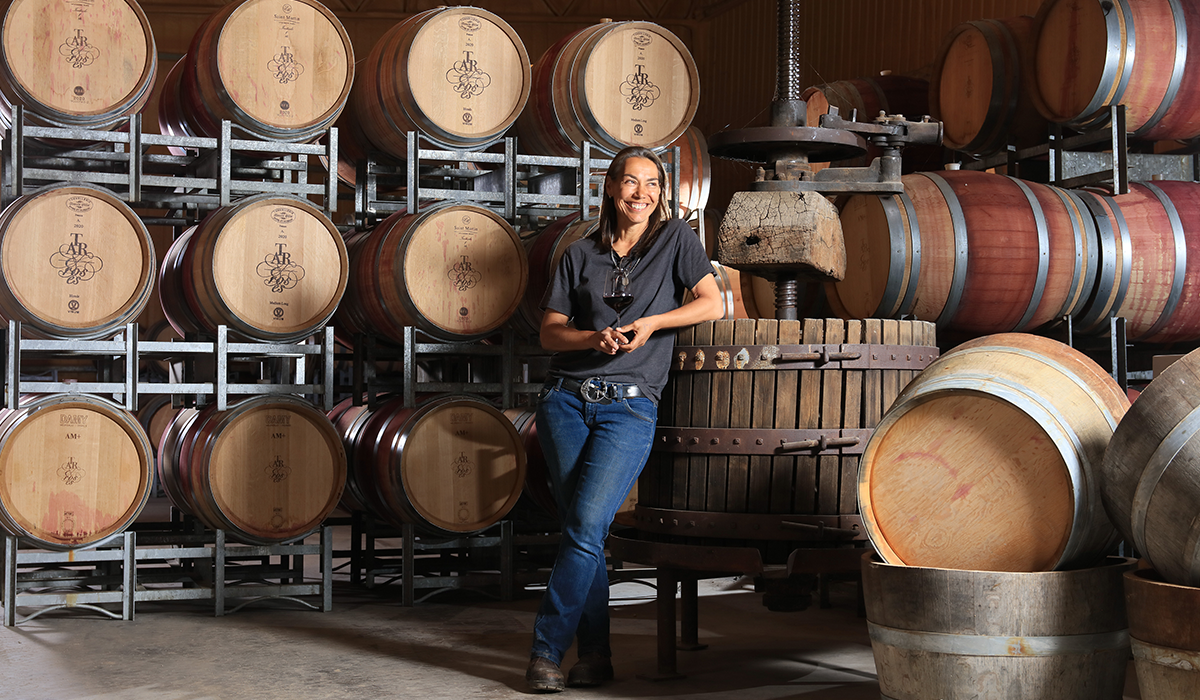Long before Heathcote became synonymous with shiraz, it was gold country. By the mid-1850s, the region’s namesake township, an area known as Jaara Jaara country pre-British settlement, accommodated nearly 40,000 fortune seekers looking to mine the bright red Cambrian soils that give the region’s wines their signature concentration.
It was around this same time that the area’s first vines were planted, however it wasn’t until the 1960s, when the gold rush was a distant memory, that the region began to find its feet. It would be another 40 years until Heathcote’s vast boundaries would be officially drawn – stretching to Nagambie in the east, Macedon Ranges to the south and Bendigo to the west – and an official Geographical Indication assigned.
Gordon Leckie, who founded She-Oak Hill in 1975, was one of the first to plant shiraz in the region at a time when it was relatively unknown. Their viticulturist Jane Leckie, Gordon’s daughter-in-law, says that in the early days, Gordon would drive a boot-load of wines to Jimmy Watson’s Wine Bar in Melbourne’s Carlton and sell them on the street out the front.

Operations may be more legit these days, but She-Oak Hill’s 10 hectares of old-vine shiraz and chardonnay vines are still dry-grown and hand pruned. “As the years go on, we’ve needed to reduce the crop to help with hot, dry summers,” Jane says. “Although, in part it’s because the vines are old, and they have root systems that run metres into the ground.”
Ian Hopkins of Tellurian is looking upwards for a solution to rising temperatures. They recently released the 2019 Tellurian Sommet Shiraz, a wine that draws fruit from a 0.6-hectare block on the highest point of the property (sommet is French for ‘top of the mountain’).
Here, vines are tightly spaced – rows are 1.6m apart, as opposed to Tellurian’s other vineyards, which sit at 2.75m – for greater fruit concentration. They face south, which limits sun exposure for slower ripening. “It drinks quite well young, but has an intensity that will stand it in good stead over the long haul,” Ian says.

Narelle King of Tar & Roses has been on the lookout for new sites, growers and varietals. Since the inception of her label in 2006 (with winemaking partner Don Lewis, who passed away in 2017), Narelle has sourced fruit for her mostly Heathcote-based wines from local growers, usually those of Italian heritage.
After a change of ownership with her main vineyard, she started seeking out new suppliers. “When you move on from one big vineyard, it gives you a chance to find a whole lot of others,” Narelle says. “There are so many growers planting exciting varietals.”
The Tar & Roses flagship wines are nebbiolo and sangiovese, and Narelle has found a number of high-grade suppliers for those. It’s the newer varietals she’s trying to get her hands on. “I was in a vineyard buying sangiovese, and I had a look at some excellent arinto – I would have bought it, but it had already been sold,” she says. “But now I know it’s there.”
“Alternative varietals are really bringing Heathcote a second wave of fame,” she says. “People think Heathcote is only a certain style of shiraz, but you can get all sorts of styles here. It’s such a big GI – from the top to the bottom it’s three weeks in ripening. There are lots of different styles in geography and winemaking.”

That arinto does not come from Chalmers, but it’s one of the few non-French varietals in Heathcote that doesn’t. The family-owned grower/producer has 27 mostly Italian varietals planted in the region, which Kim Chalmers describes as both “a risk and an exciting adventure”.
Chalmers was Australia’s first import of nerello mascalese, a Sicilian red that’s ascending towards rock-star status due to its incredible value and earthy, floral notes.
Kim says it took 10 years to get virus-free cuttings with the right DNA profile. The nerello vineyard is planted on the Mount Camel ridge, although the aim is not to simulate growing conditions of the grape’s natural habitat.
Kim says there are two ways to introduce foreign grape varietals. “You can either replicate the environment or break the rules – it’s about looking at the vines and the site, and thinking this might not make sense on paper, but it could be really great,” she says.

It’s for this reason that Chalmers’ pecorino, first released in 2018, doesn’t taste like pecorino from Italy’s east coast, where it makes a firm, minerally white. Instead, the Heathcote-grown pecorino is full-bodied, with nectar and bee’s wax notes. “It’s the thick skin and high acid, with an unexpected bonus – Heathcote’s rich and volcanic soils gave us a texture we weren’t expecting,” Kim says.
Due to Chalmers’ ambitious import schedule, you’ll see “Heathcote” on the label of many bottles not produced within the GI. They sell fruit to 75 different Australian producers in quantities ranging from 300 tonnes to 500kg, the latter mostly going to smaller producers that sell to restaurants and independent bottle shops. “We give a lot of up-and-coming winemakers something interesting to get them started,” Kim says.
Tim Sproal is one such winemaker, although he goes one step further and adds the nearest town to the label, too. “Subregionality is really important,” he says. Tim, a self-trained winemaker who set up his lo-fi label Minim in 2011, grows his own shiraz in Metcalf, which is on the cooler southern end of the Heathcote GI.
Tim started buying fruit from Chalmers’ northern Colbinabbin vineyard in 2015. “I found that, particularly with their fiano and nero d’avola, the fruit is perfectly ripe, but with so much natural acid.” Tim, who never adjusts his wines with acid, was surprised to see such a great acid profile from Heathcote’s warmer top end. “It turns out that if you plant the right varieties, you get beautifully balanced, varietally sound, but still powerful wines.”
This article first appeared in Halliday magazine. Become a member to receive the print publication as well as digital access.



